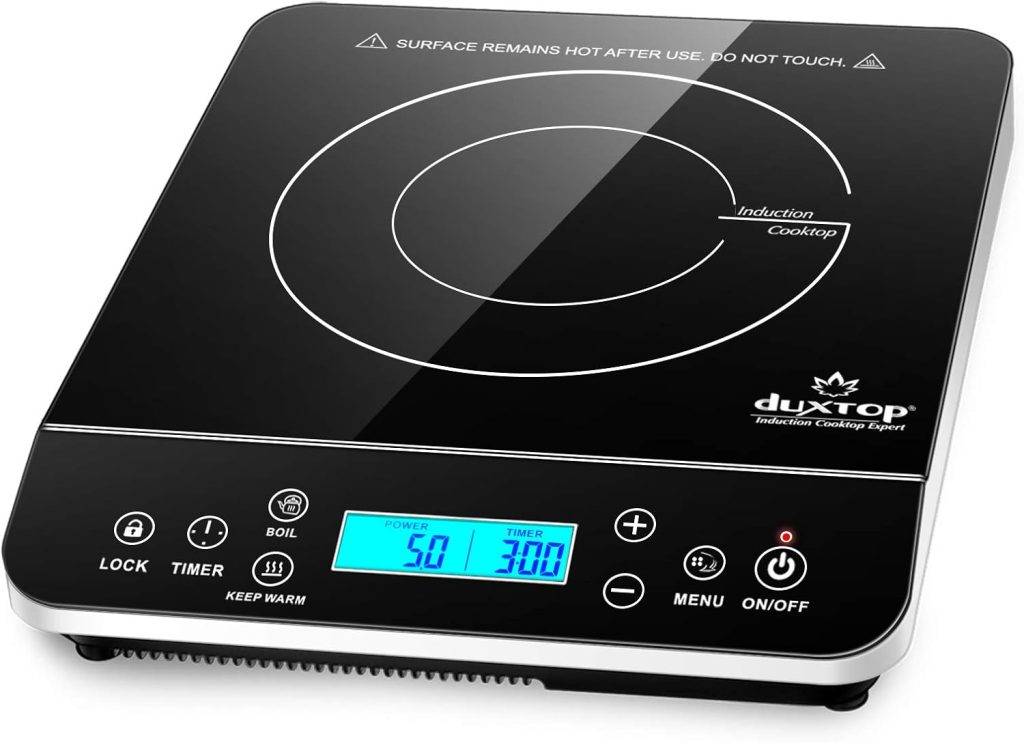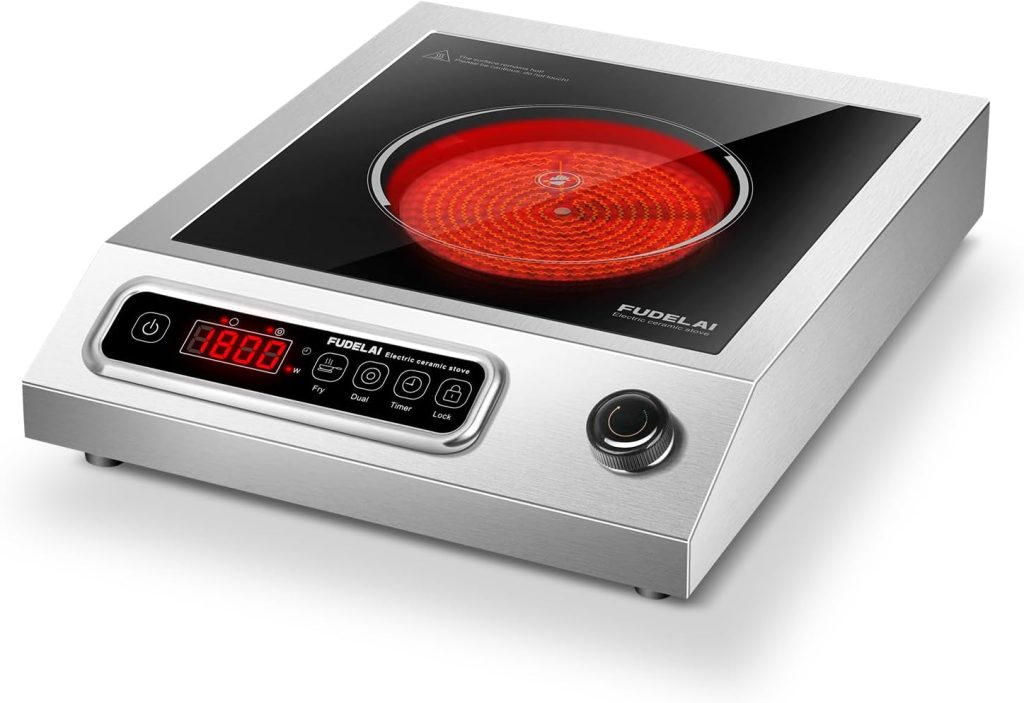Induction vs Infrared Cooktops: Which One Suits Your Cooking Style Best?
When it comes to upgrading your kitchen, the battle of induction vs infrared cooktops is one worth exploring. Both options offer sleek, smooth surfaces and are clear improvements over traditional electric coil stoves. But while they might look similar on the outside, the underlying technology—and user experience—differs quite a bit.
Let’s break down how these two modern cooktops work, where each excels, and which one might be the better choice for your needs.

🔌 How Induction Cooktops Work
Induction cooking uses electromagnetic fields to heat your cookware directly. Instead of heating the cooktop surface, energy flows into the pan, heating it from the inside out. This means faster cooking, precise temperature control, and minimal heat loss.
Benefits of Induction Cooktops:
- Superior energy efficiency — up to 90% energy transfer
- Cool-to-touch surface — only the pan gets hot, not the cooktop
- Instant response time — ideal for temperature-sensitive cooking
- Safe for households with children — reduces risk of burns
- Sleek and easy to clean
Drawbacks:
- Requires magnetic cookware (ferrous metal like cast iron or some stainless steels)
- May not work with aluminum, glass, or copper unless you use an induction interface disk

🔥 How Infrared Cooktops Work
Infrared cooktops rely on halogen lamps and radiant coils to transfer heat via infrared radiation. This heat is absorbed by the bottom of your cookware and works similarly to traditional stovetops, but much faster and more evenly.
Benefits of Infrared Cooktops:
- Compatible with any type of cookware — including glass, aluminum, ceramic
- Quick heating — boils water faster than traditional electric stoves
- Smooth, flat surface for easy cleaning
- More affordable entry-level models compared to induction
Drawbacks:
- Surface gets very hot and stays hot longer, posing a burn risk
- Less energy-efficient than induction but more efficient than solid coil electric
- May create residual heat and odor depending on use
⚖️ Comparison Table: Induction vs Infrared Cooktop
| Feature | Induction Cooktop | Infrared Cooktop |
|---|---|---|
| Heating Method | Electromagnetic induction | Infrared radiation via halogen lamp |
| Surface Heat | Stays cool | Gets hot |
| Energy Efficiency | 80–90% | 65–75% |
| Cookware Compatibility | Magnetic cookware only | Any cookware type |
| Safety | High (auto shut-off, cool surface) | Moderate (hot surface) |
| Cleaning | Very easy | Easy |
| Price Range | Moderate to high | Affordable to moderate |
🏁 Final Verdict: Which Cooktop Should You Choose?
If precision, energy efficiency, and safety are your top priorities, an induction cooktop is the clear winner. It’s ideal for tech-savvy home cooks and families concerned with energy savings and child safety. Plus, it’s an excellent long-term investment if you already own (or are willing to buy) compatible cookware.
On the other hand, if you’re looking for a budget-friendly option that works with any pot or pan you already own, an infrared cooktop is a smart choice. It still outperforms old-school electric coils and offers a flat surface that’s easy to wipe down.
👨🍳 Pro Tip for New Buyers
If you’re still on the fence, consider trying a portable induction cooktop or compact infrared burner first. Both are great for small kitchens, RVs, or as secondary cooktops, and they give you the chance to experience each technology without committing to a full-size range.
🛒 Popular Use Cases for Each Type
Induction Cooktops:
- Precision tasks like melting chocolate or simmering sauces
- Families with young children (safety first)
- Small apartments or modern kitchens aiming for energy savings
Infrared Cooktops:
- Outdoor cooking or backup kitchen burners
- Users with a mixed collection of cookware
- Budget shoppers looking for modern cooking convenience
🙋♀️ Frequently Asked Questions (FAQ)
❓Can I use non-magnetic cookware on an induction cooktop?
No. Induction cooktops require ferrous (magnetic) cookware to function. If a magnet sticks to the bottom of your pan, it will work.
❓Which is safer, induction or infrared?
Induction cooktops are generally safer. They stay cool to the touch, and most models feature automatic shut-off and child locks. Infrared surfaces get hot and can retain heat longer.
❓Can infrared cooktops damage my glass cookware?
No. Infrared cooktops are compatible with glass, ceramic, aluminum, and steel pots. Just ensure the bottom of your cookware is flat for even heating.
❓Is the price difference worth it for induction?
If you value precision, energy savings, and safety, the investment is absolutely worth it. Induction pays off in the long run, especially with heavy daily use.
❓Can I install an induction cooktop in a small kitchen or RV?
Yes! There are portable induction models perfect for RVs, tiny homes, or secondary cooking areas. Look for compact units under 1800 watts.
💬 What’s Your Experience?
Have you tried cooking with induction or infrared cooktops?
Which one do you prefer—and why?
👇 Drop your thoughts in the comments below! We’d love to hear:
- 🥘 What dishes do you cook with your induction or infrared cooktop?
- 🔧 Any tips for maintenance or cookware selection?
- 💡 Any frustrations or favorite features?
Your input helps other readers make smarter kitchen decisions!
✅ Conclusion
While both induction and infrared cooktops represent a step forward in kitchen technology, your lifestyle, cookware, and priorities will ultimately determine the better fit. Whether you go with the electromagnetic efficiency of induction or the versatile heating power of infrared, one thing is certain—you’ll enjoy a faster, cleaner, and more enjoyable cooking experience than with traditional stovetops.

Leave a Reply
You must be logged in to post a comment.